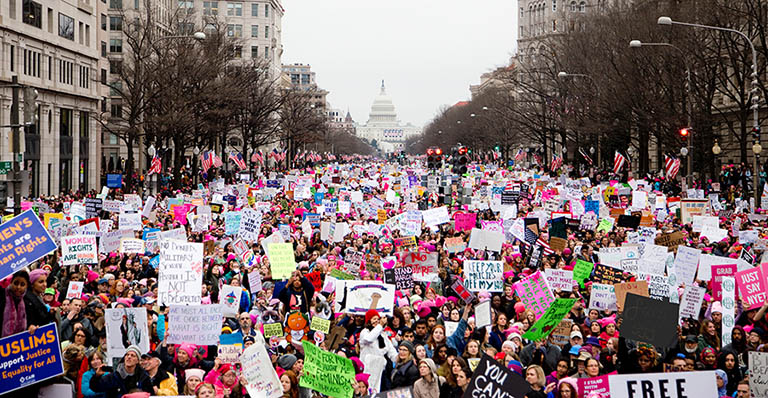
#MeToo and You--The Movement's Impact in the Workplace
by Laura Simmons, Esq., HR Director and EPLI Claims Manager, ABA Insurance Services
Since late 2017, the entertainment industry has been deluged with sexual harassment allegations against some of its biggest names. The public has witnessed powerful men in the entertainment industry being taken down by these allegations. Harvey Weinstein, Matt Lauer, Bill O’Reilly, and others have watched their careers vanish when someone finally listened to the women they had been victimizing for years. The resulting #MeToo and #TimesUp movements demonstrate that women are no longer willing to tolerate or ignore sexual harassment. Only time will tell the impact this will have on companies in other industries.
However, this is not unique to the entertainment industry. In 1992, sexual harassment captured the country’s attention when President Bill Clinton was accused of inappropriate conduct with an intern, and Clarence Thomas had to contend with Anita Hill’s allegations during his confirmation hearings. Despite Bill Clinton remaining President of the U.S. and Clarence Thomas being confirmed as a Supreme Court Justice, businesses throughout the country felt the impact of these events with a 71% increase in charges filed with the EEOC (Equal Employment Opportunity Commission). Employers were forced to review their policies and procedures to ensure that there was a “zero tolerance” for sexual harassment, and that managers were trained on how to respond to allegations of sexual harassment. Employers had to take a hard and honest look at their culture and make appropriate changes.
What will happen in 2018 as a result of the #MeToo and #TimesUp movements?
It is too soon to tell. It is highly anticipated that the frustration witnessed in the entertainment industry will expand to other industries, resulting in additional sexual harassment complaints. Already, visitors to the EEOC website have more than doubled. While the scope of the impact is still unknown, no one doubts that there will be increased scrutiny on sexual harassment resulting in more claims being brought. Employers should use these events in the news to improve their culture, review their policies, and ensure that they provide a harassment-free workplace for everyone.
So what now? Your organization should take a hard look in the mirror and consider the following issues:
What is your culture? Honest answers only!
Companies are fully aware of sexual harassment as an issue and certainly take steps and have policies to avoid it, BUT, what actually goes on in your workplace? It’s easy to identify the very graphic conduct coming out of Hollywood as sexual harassment, but what may be happening in your workplace is likely much more subtle. It is a good reminder that ALL of the following conduct is considered sexual harassment:
- Sexual jokes, innuendoes and gestures
- Comments about a person’s appearance, dress or body
- Unwelcome flirtations or advances even if joking or subtle
- Terms of address like “honey,” “baby,” or “sweetheart”
- Intrusive questions or comments about a co-worker’s personal life or sex life
- Any unnecessary and unwanted physical contact such as touching, rubbing, or hugging
- Display or transmission of sexually suggestive electronic content
Employers need to be aware of how employees actually interact on a day-to-day basis in the workplace. Your company is at risk if a culture remains where some or all such conduct is tolerated.
What are your company policies on sexual harassment?
Most companies proudly report that they have a “zero tolerance” policy on sexual harassment. This may actually deter the reporting of sexual harassment issues. Many women want to report a sexual harassment issue, but do not want the perpetrator to be fired. They just want the behavior to stop. A policy that references appropriate consequences for sexual harassment without the “zero tolerance” language may actually encourage more women to come forward and honestly report situations without the fear that they may ruin someone’s career.
There will certainly be situations where harassing conduct warrants termination, but if the sexual harassment policy allows more flexibility by employers, the most appropriate course of action can be identified. Employers may want to review their sexual harassment policy with counsel to determine whether it can be made more effective.
Sexual harassment is not a 9 to 5 issue only.
Many employees can be reached any time of the day or night through emails or texts. Employees regularly socialize together after hours. Many companies sponsor social events for employees after work hours. None of these needs to (or should) stop; however, rules involving sexual harassment apply in these situations as well. Putting employees in social situations—often with alcohol—can lower inhibitions and make employees feel very comfortable with each other. This can create camaraderie and improve teamwork, as long as nothing crosses the line.
- Ensure that employees understand that being “off the clock” is not a defense for sexual harassment.
- If you serve alcohol at events, consider having members of your management team remain sober for the event and stay for the duration so that they can identify and put a stop to any issues that may arise.
Train and educate managers and supervisors
Employees who have been placed in managerial and supervisory roles within the company are the frontline defense for sexual harassment.
- They should understand that they each have an obligation to watch for behavior that might be making someone uncomfortable, and must step in and stop it.
- They should be trained on what type of conduct can be considered sexual harassment.
- They should understand that conduct does not have to rise to the level of actionable sexual harassment before speaking up. If they think conduct MIGHT be making an employee uncomfortable, they should address the situation.
Consider what resources are currently provided to your managers and supervisors, and evaluate whether enough is being done to make them effective and active at preventing sexual harassment.
66e06ecd-f855-4119-b784-193811937ddc.svg?Status=Master&sfvrsn=448913a7_3/
ABAIS-Logo-1-(1)66e06ecd-f855-4119-b784-193811937ddc
.svg)